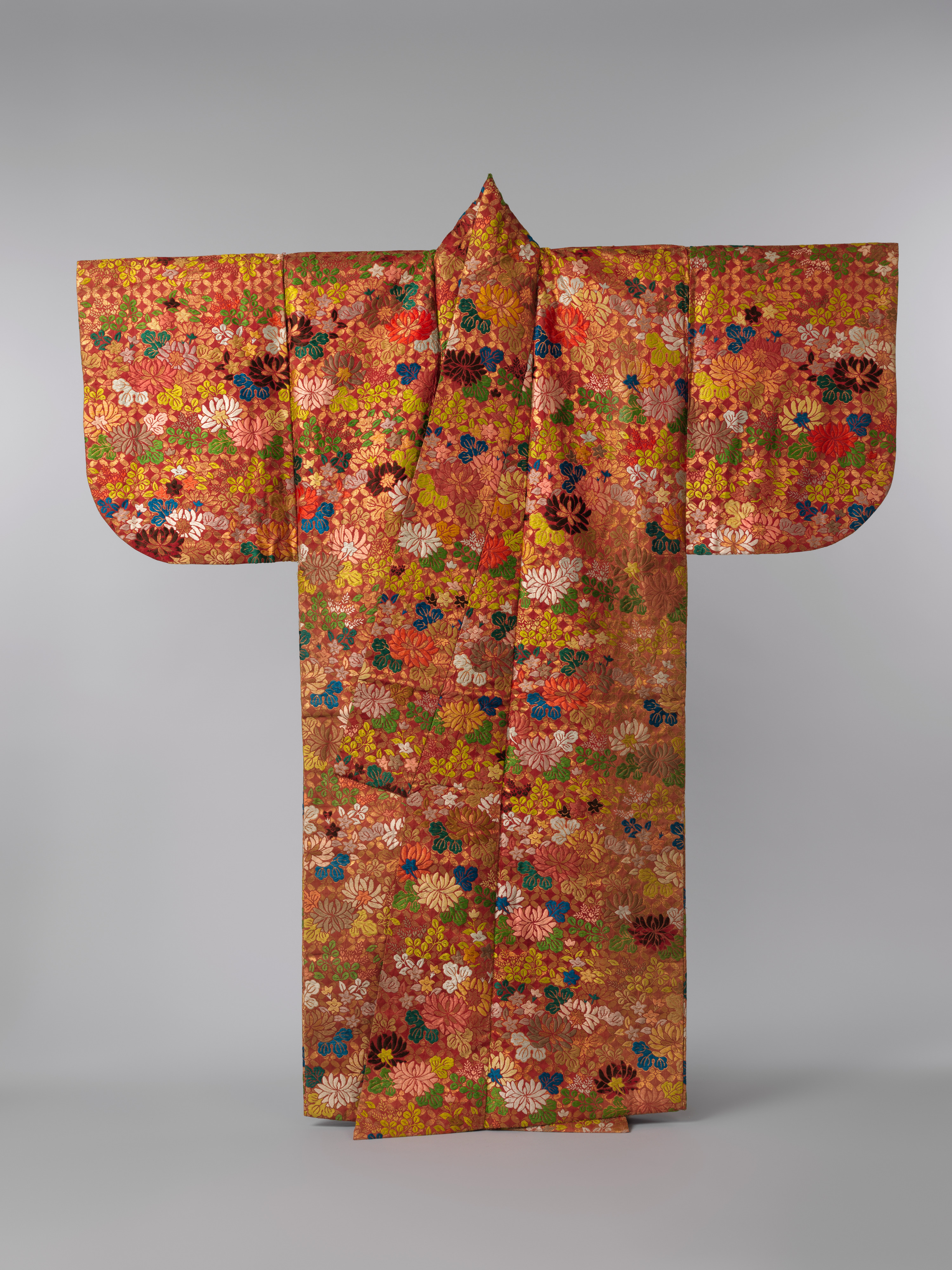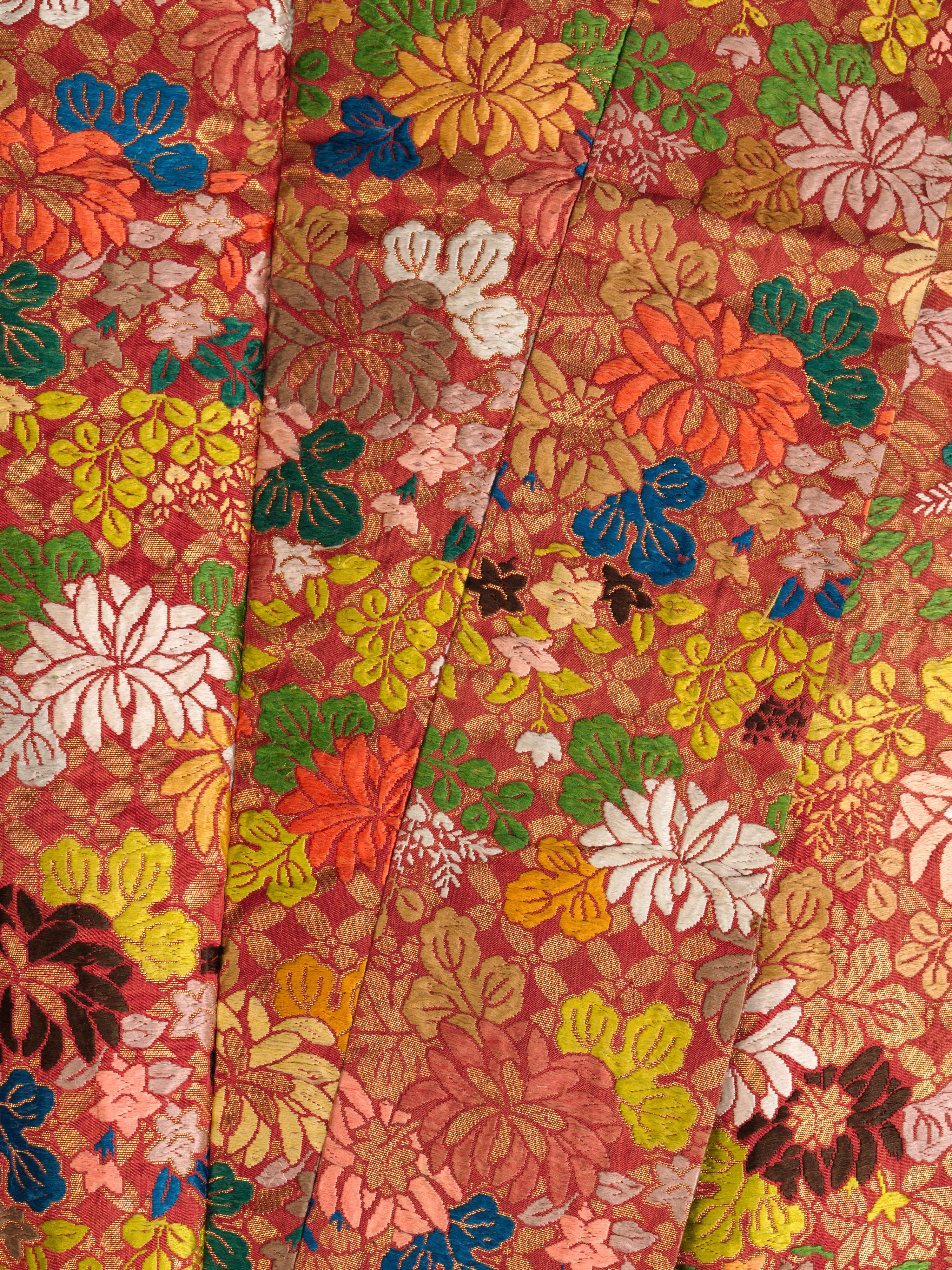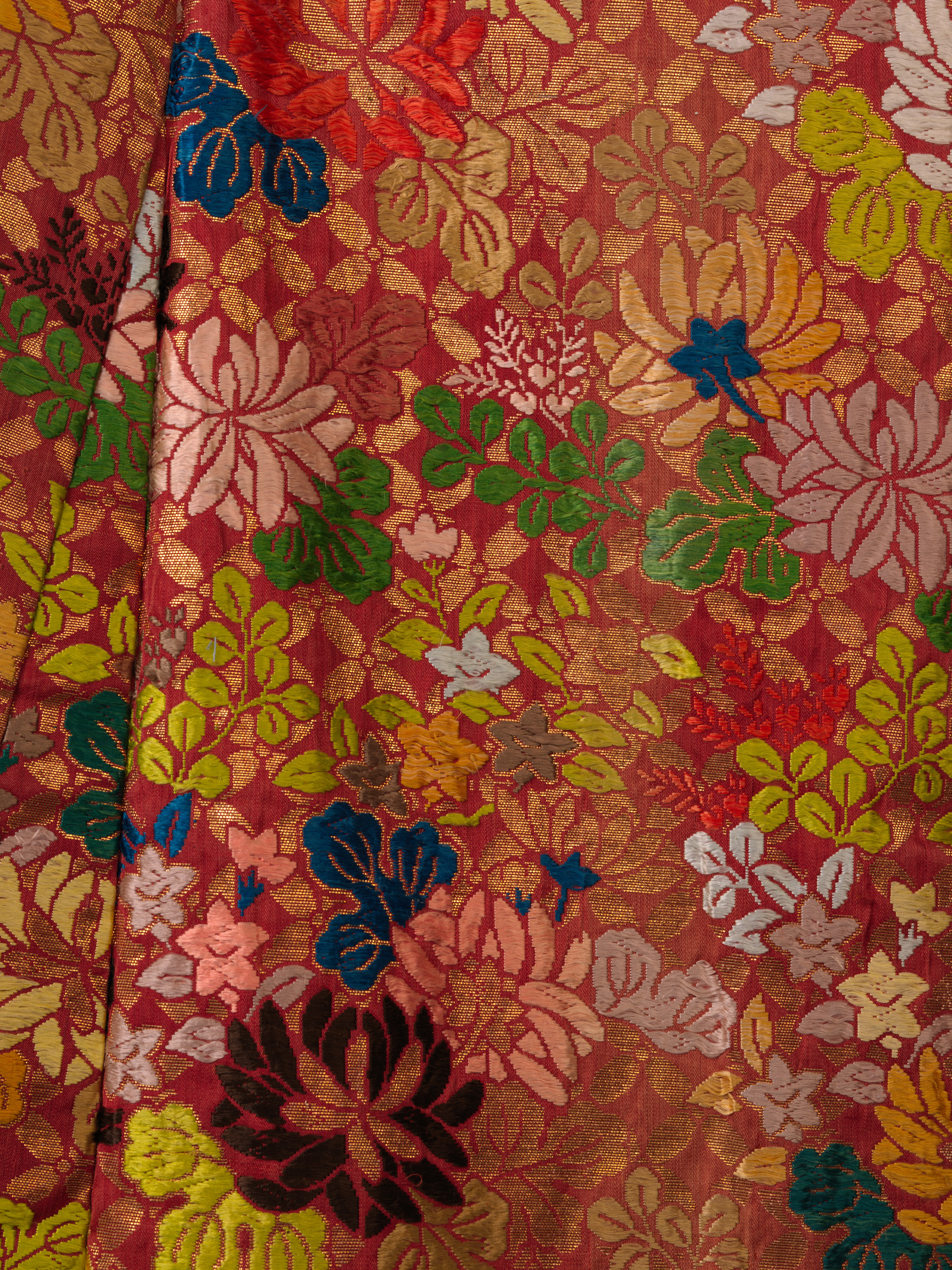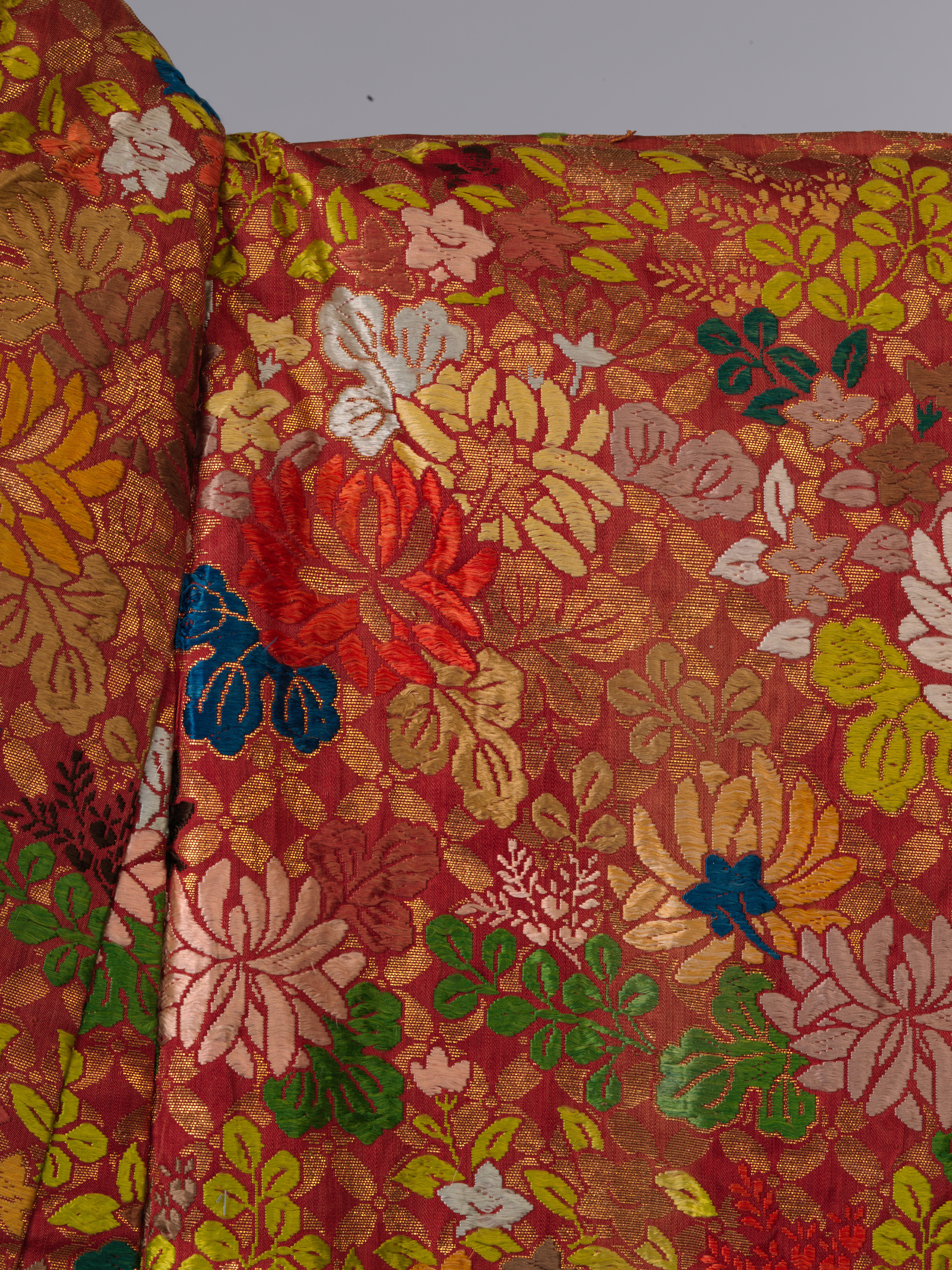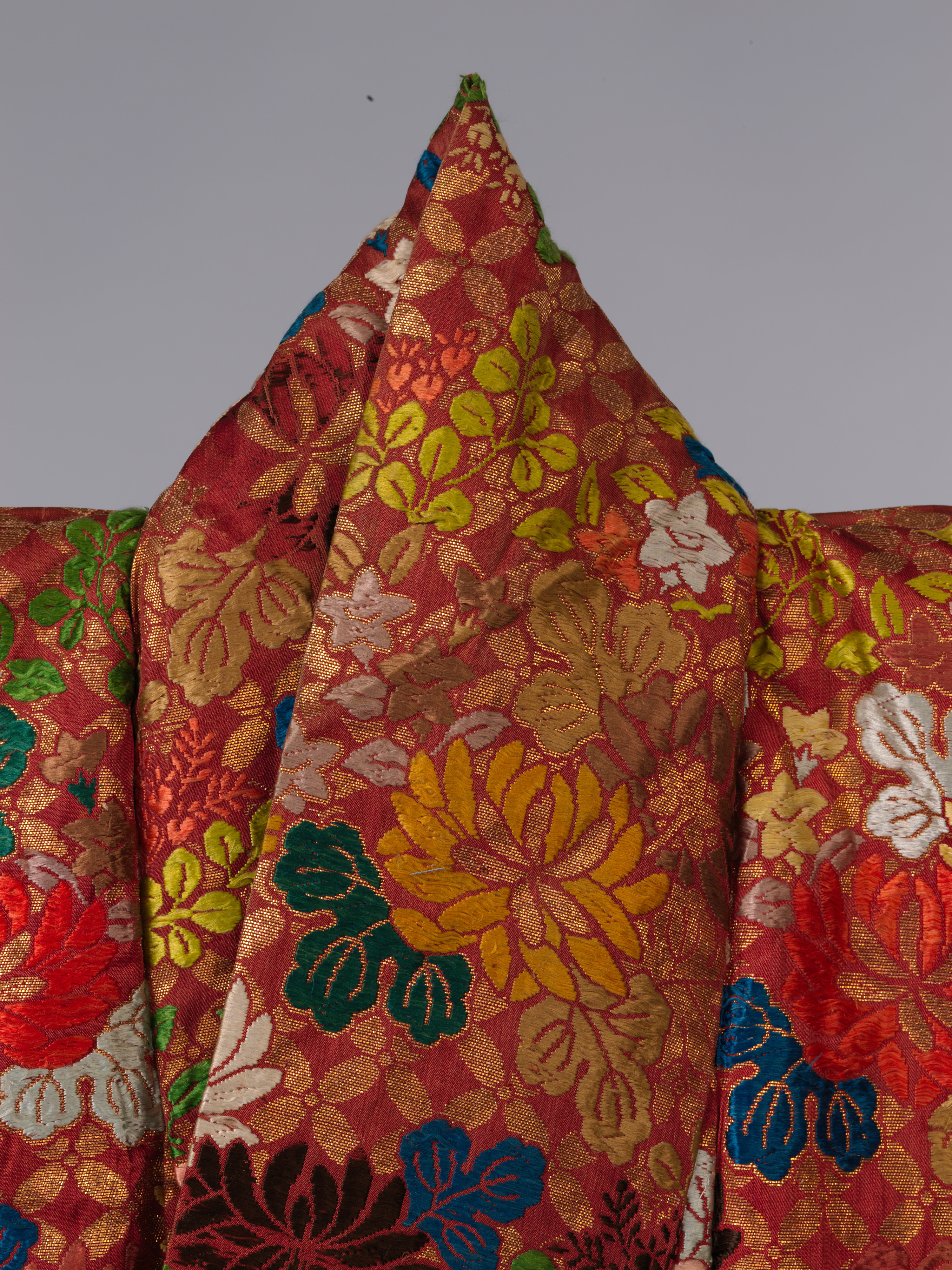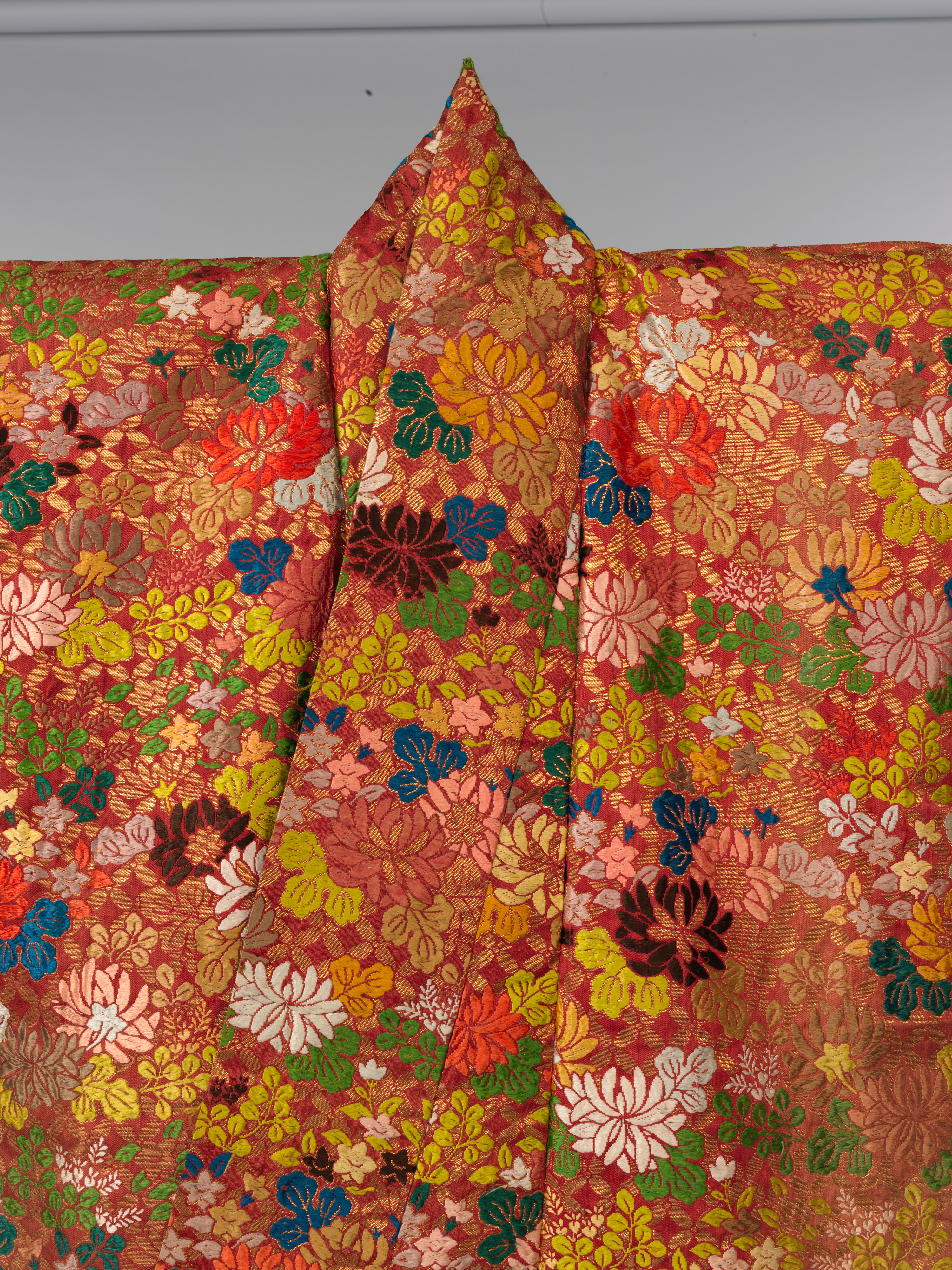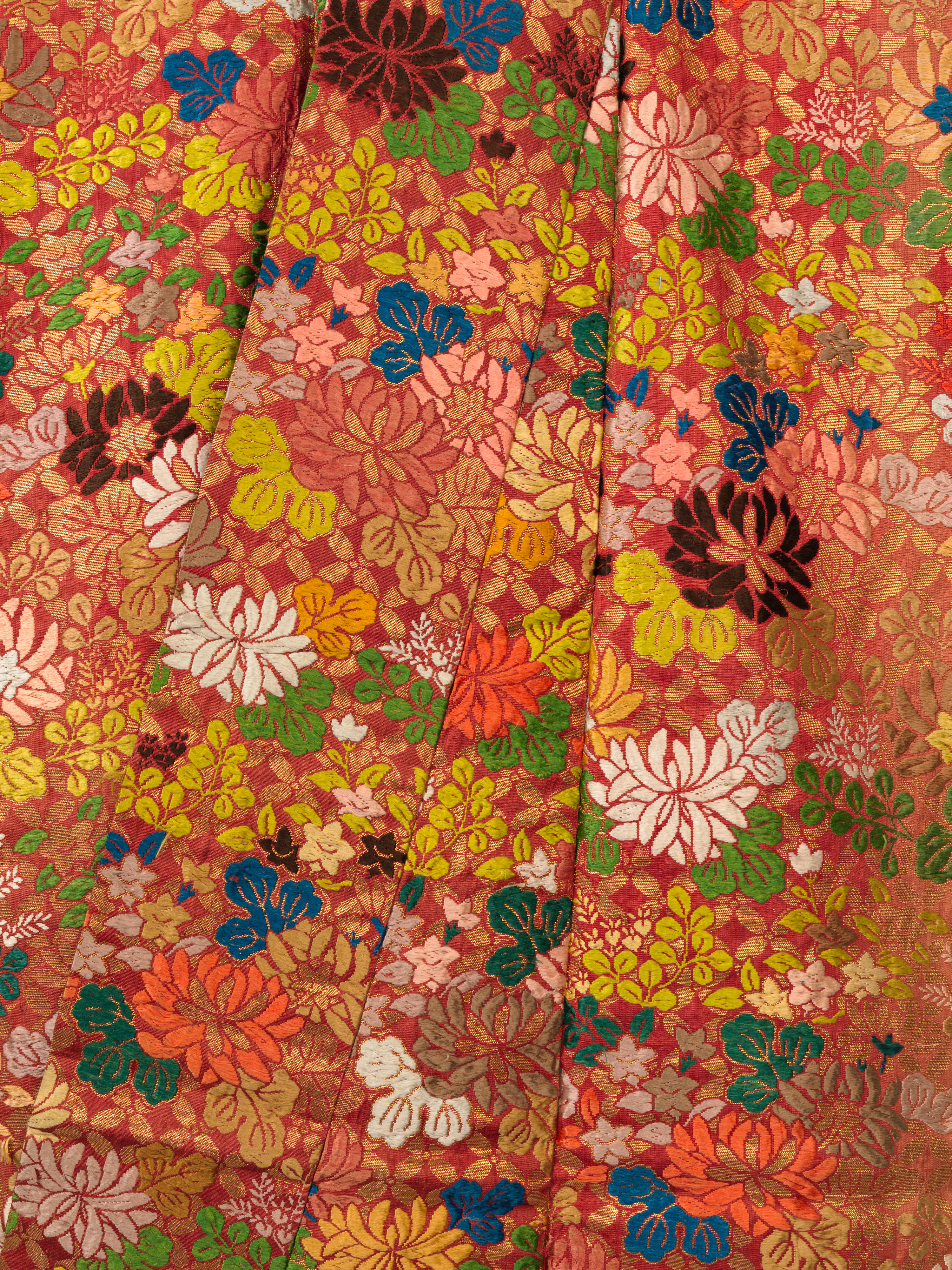Noh Robe (Karaori) with Autumn Flowers and Grasses
Not on view
Karaori, literally "Chinese Weave," is a stiff brocade technique that employs a uniform direction of weft in which long stitches of glossed silk threads are floated over an unglossed silk twill ground, while foil-covered flat threads are bound close to the twill ground weave. The stiff karaori brocade does not drape easily, but it creates an angular effect, helping to evoke the spirit of a former noblewoman. The karaori with flowering grasses emphasizes that woman's femininity. The choice of a robe for a play is based on both its color and pattern, but not on a specific reference to a motif. The aura from the elegance of the robe and the actor's spiritual interpretation create the central persona in the play.
A red-ground color (iro-ari) indicates the role of a beautiful young woman. Motifs are governed by convention, but they are incorporated in such variations that robes are rarely identical. The shippo-tusnagi (interlocking circles) is the background motif woven in gold-foil flat threads. Derived from the Buddhist term shiho (seven jewels or treasures), its auspicious meaning led to its popularity in textile design, especially in Noh robes.
Due to rights restrictions, this image cannot be enlarged, viewed at full screen, or downloaded.
This artwork is meant to be viewed from right to left. Scroll left to view more.


